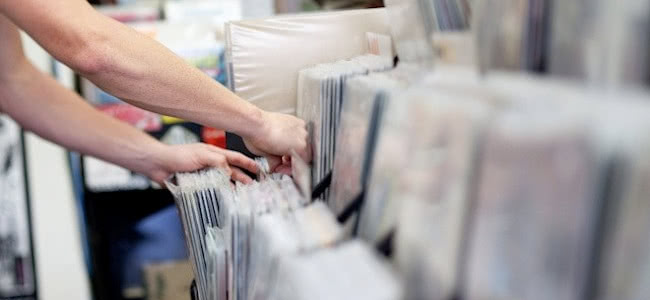There’s no denying the mass resurgence of vinyl in recent years, and from a sales perspective, the signs are everywhere: the year-on-year success of the annual Record Store Day, LP figures in Australia doubled in 2013 while Stateside, the US is enjoying a 40% increase on vinyl sales from this time last year, reaching a record 6.1 million units.
Then there’s the unofficial poster boy for the vintage format, Jack White, whose trick-laden Lazaretto ‘Ultra LP‘ is not only the best selling slice o’ wax in 2014 but smashed a 20 year old record for the biggest first-week vinyl sales.
No doubt, independent record stores that managed to survive the downturn in CD sales have seen a bump in sales from the vinyl revival.
According to sales data from US stats-trackers Nielsen, vinyl LP sales for this year’s Record Store Day were up 58% from last year’s event, which judging by the RSD 2013 figures, means an estimated 353,920 records flew off independent store’s shelves.
The 2014 figures, which track the full sales week ending 19th April, 2014 in the US, also shows a staggering increase of record sales up from the previous week. For example, sales of 12″ records increased by more than 3,100%, up 113% over the same week last year.
[include_post id=”417437″]
But the biggest vinyl retailer in the world might shock you. While independent stores make up 64% of all vinyl sales in the United States, that’s a collective audience from hundreds if not thousands of stores.
No, the biggest vinyl retailer in the world is Urban Outfitters, a clothing store known for offensive t-shirts.
“Music is very, very important to the Urban customer… in fact, we are the world’s number one vinyl seller,” Calvin Hollinger, the company’s chief administrative officer, said at a meeting with analysts earlier this week according to Buzzfeed.
The company is staying tight-lipped about actual sales numbers, but it isn’t that hard to believe. Outside of the digital realm with Amazon reigns supreme, there isn’t another retailer with such a large footprint taking vinyl so seriously. At least, not yet. Target and supermarket chain Whole Foods have recently decided to get in on the action, although their sales aren’t that significant yet.
Urban Outfitters claims that it is their sales strategy that has helped propel them to the top of vinyl sales. The stores don’t actually own any of the vinyl they’re selling, instead opting to rent their shelf space to over 100 vendors giving many artists an unmatched opportunity to push their LPs on Urban Outfitters’ 18-28-year-old customer base who grew up in a world of Napster and Spotify.
But the more fashionable buying vinyl becomes, the more analysts are fearing the boom could turn into a bust.
While sales of vinyl have compounded at around 30% year on year since 2007, turntable sales in the US have ranged from 104,000 to 115,00 units in the same six year period. This leads to some interesting conclusions, so either the newer turntables purchased are far, far more durable than those in recent memory, or something else is happening with these new records.
[include_post id=”327196″]
While hopefully a good proportion of people buying records are actually listening to them, just as many are probably buying them purely for their artistic and cultural merit; think of the way that vinyl display cases are marketed or how trendy retailers like Urban Outfitters treat records like a fashion accessory.
The nostalgia factor of vinyl and their cultural appeal has certainly been pushed as a fashionable, marketable item in recent years and it’s working, as demonstrated by a recent study in the UK that showed the 18-24 demographic providing the biggest demand for vinyl records.
Still, there’s a risk that vinyl could become more of a fashion statement than an actual expression of musical taste. In fact, it may have already happened, and like every other fashion item, the river of gold uncovered by artists could be on a collision course with reality.

































